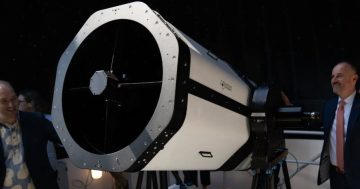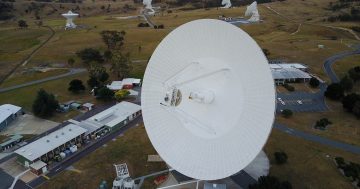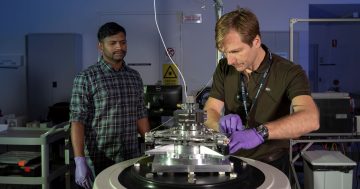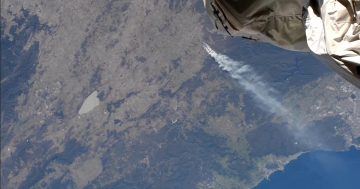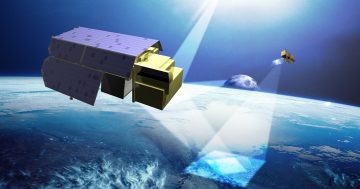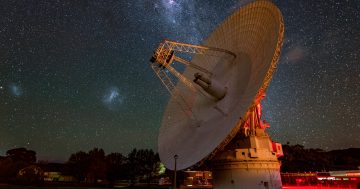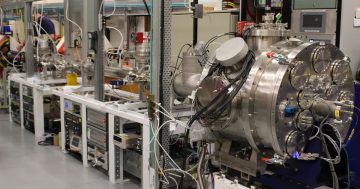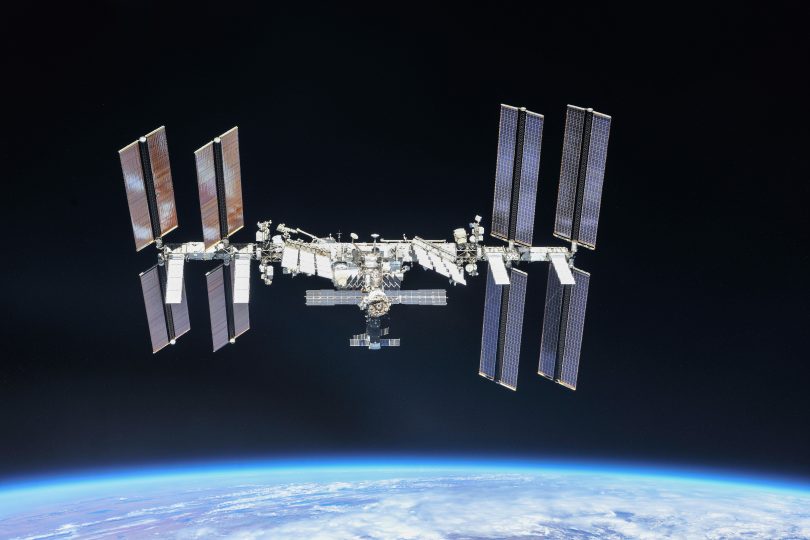
The International Space Station (ISS) measures 108 metres long. Photo: NASA.
What may appear to be a small star will glide across Canberra’s twilight sky this week as the International Space Station (ISS) continues its dance with Earth.
The ISS will be visible from the ACT for a few minutes from 7:03 pm on Wednesday (8 September) and from 6:16 pm on Thursday (9 September) as it passes over from the west to the north of our sky.
The ISS is the biggest earthly object in space, at roughly the length of a football field, but there are only a few nights every month when it is visible from southeast Australia.
The ISS travels at about 28,000 kilometres per hour, orbiting Earth every 90 minutes. Meanwhile, Earth is also rotating, so when the ISS returns to the same point in its orbit, a different part of the earth is already underneath.
Local astronomer Josie Floyd says there is only a narrow opportunity to see the ISS every month, spanning a few minutes either just after sunset or just before sunrise.
“The ISS is the best one to look at because of its sheer size and surface area,” she says.
“If you’ve never seen a satellite before, it basically looks like a really bright, slow-moving star. Depending on the path of the flyover, it can take two to six minutes to go from one horizon to the other.”
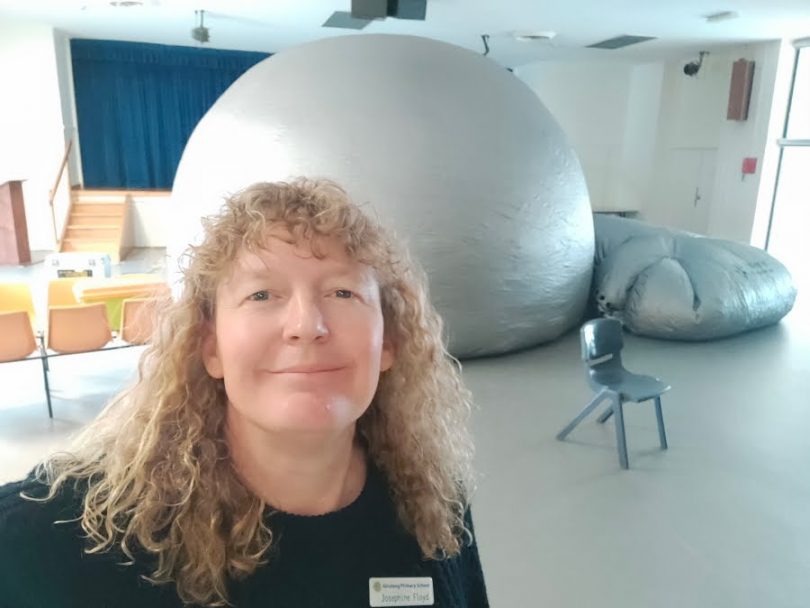
Josie Floyd and Canberra’s only portable ‘Planetarium’. Photo: Josie Floyd.
Josie Floyd teaches astronomy at Wanniassa school as a STEM teacher and the owner of Canberra’s only ‘Planetarium’. This is an inflatable igloo 5 metres in diameter and equipped with a video projection system which Josie takes around to local schools to give students an all-round virtual experience of space.
She has also managed an astronomy website called NightSkyOnline.Info for over 20 years.
The website offers detailed information on astronomy events, including what individual ACT suburbs will see when residents look up into the night sky.
The ISS itself gives off no light of its own that would be strong enough to penetrate the 420 kilometres between it and us. What we will see is the sun’s reflection off the station’s surfaces.
“There are a few satellites that have been put up recently that have flashlights on them, but apart from those ones, all satellites are only visible because of reflected light.”
Depending on the angle of the station’s solar panels, they can also catch the sunlight in just the right way as to create a massive burst of light lasting for a few seconds.
A pair of binoculars may reveal a slight colour change as it ‘sets’ and heads into Earth’s shadow, in much the same way as the moon appears red during a lunar eclipse.

The massive solar panels sometimes catch the light of the sun and send it flashing towards Earth. Photo: NASA.
Josie says the planets of Mercury, Venus, Jupiter and Saturn are also visible in our night sky at the moment and that even a cheap telescope will bring out incredible details such as the rings of ice and dust encircling Saturn.
Word of an International Space Station was first heard 36 years ago in the US when then-President Ronald Reagan directed NASA to develop a satellite and man it with an international crew.
Zarya, the first ISS module, was launched into space by rocket on 20 November 1998. Subsequent trips by space shuttle ferried in more parts and crew.
Six astronauts live onboard today in a space comparable to a six-bedroom house. The amount of time they’re onboard varies depending on the mission, but usually consists of six months.
An astronaut’s primary job while on the space station is conducting scientific experiments and maintaining the space station. When not working, they relax in many of the same ways the rest of us do on Earth.
In a zero-gravity environment, they must exercise for two hours every day to ensure the parts of their bodies designed to bear weight remain fit. They eat a variety of foods; some need to be rehydrated. When astronauts are ready to sleep, they stay in special sleep bags secured to the walls of their quarters.
Because of the station’s fast orbit, the crew is treated to 16 sunrises and sunsets every day.
NASA says the station has played an important role in developing the technology needed for their next step: setting up a permanent base for humans to live on the Moon.
Visit NASA’s Spot the Station website to see the exact locations and times for the sightings.











